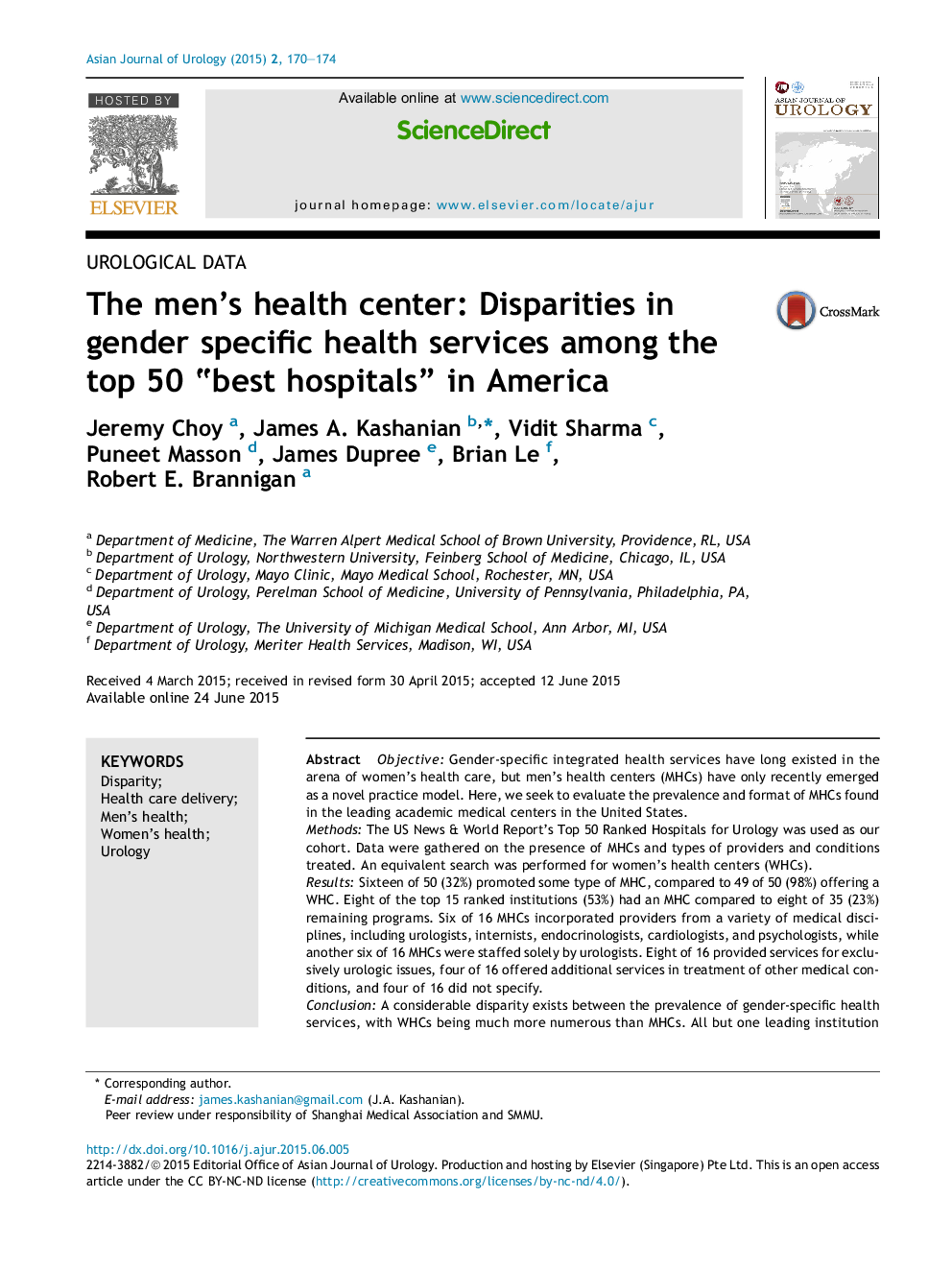| Article ID | Journal | Published Year | Pages | File Type |
|---|---|---|---|---|
| 3853500 | Asian Journal of Urology | 2015 | 5 Pages |
ObjectiveGender-specific integrated health services have long existed in the arena of women's health care, but men's health centers (MHCs) have only recently emerged as a novel practice model. Here, we seek to evaluate the prevalence and format of MHCs found in the leading academic medical centers in the United States.MethodsThe US News & World Report's Top 50 Ranked Hospitals for Urology was used as our cohort. Data were gathered on the presence of MHCs and types of providers and conditions treated. An equivalent search was performed for women's health centers (WHCs).ResultsSixteen of 50 (32%) promoted some type of MHC, compared to 49 of 50 (98%) offering a WHC. Eight of the top 15 ranked institutions (53%) had an MHC compared to eight of 35 (23%) remaining programs. Six of 16 MHCs incorporated providers from a variety of medical disciplines, including urologists, internists, endocrinologists, cardiologists, and psychologists, while another six of 16 MHCs were staffed solely by urologists. Eight of 16 provided services for exclusively urologic issues, four of 16 offered additional services in treatment of other medical conditions, and four of 16 did not specify.ConclusionA considerable disparity exists between the prevalence of gender-specific health services, with WHCs being much more numerous than MHCs. All but one leading institution had WHCs compared to less than one-third having MHCs. Our findings also highlight the heterogeneous nature of men's health programs, as they exhibit great variability in program type and focus, yet are all being marketed under the “Men's Health” banner.
